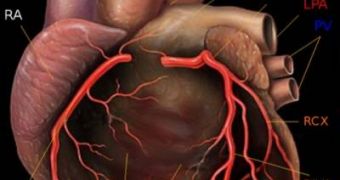Conventional medical knowledge held that while the skin and the bones could heal once they got damaged, some organs such as the heart and the brain could not. It also pinpointed that cells inside the heart and the brain did not regenerate throughout a person's life, and that those who were destroyed never got replaced. This statement has been proven false for the brain a few years back, when experts have evidenced the fact that neurons can grow even when the individual is already an adult. Now, the same thing has been proven to happen in the heart as well, as researchers have discovered that new cells are formed in the organ throughout a person's life.
“If you cut your skin, your skin can heal. If you break your bone, bones can heal. But organs like the heart and brain, people thought, couldn’t make new cells. But now we've shown that the human heart does make new cells. We feel that this is a very fundamental breakthrough in basic science. We totally open the door for future therapies,” University of Toronto expert Ratan Bhardwaj told LiveScience. Details of the find are published in the April 3rd issue of the journal Science.
One of the most important and potentially far-reaching applications for the new find is the development of new therapies for heart reconstruction, so that the “blood pump” could recover from extensive damage usually caused by heart attacks. Until now, whatever effects such an attack left on the human heart have been considered to be irreversible, and doctors have only limited their treatments to ensuring that no further damage comes to the heart, instead of focusing on how to repair it.
Finding out that heart cells are created continuously has not been an easy task, the researchers say. They have had to use carbon dating to establish the results of their investigation. The reasoning went that people born between the 1950s and 1963 should have large amounts of carbon-14 in every DNA strand of every cell, on account of the large number of above-ground nuclear tests that were conducted around the world. Naturally, if the cells never regenerated, then the amounts of C-14 should have been the same in each of the tested cells.
However, large discrepancies were observed, in that cells belonging to the same heart, or even next to each other, had varying concentrations of the compound. This led researchers to believe that the cells exhibiting less carbon were born more recently. In addition, the heart was found to produce new “components” even when it (and, naturally, the person owning it) was about 75 years old. The turnover rate at this age was 0.45 percent, while, at age 25, the rate was at around 1 percent.

 14 DAY TRIAL //
14 DAY TRIAL //